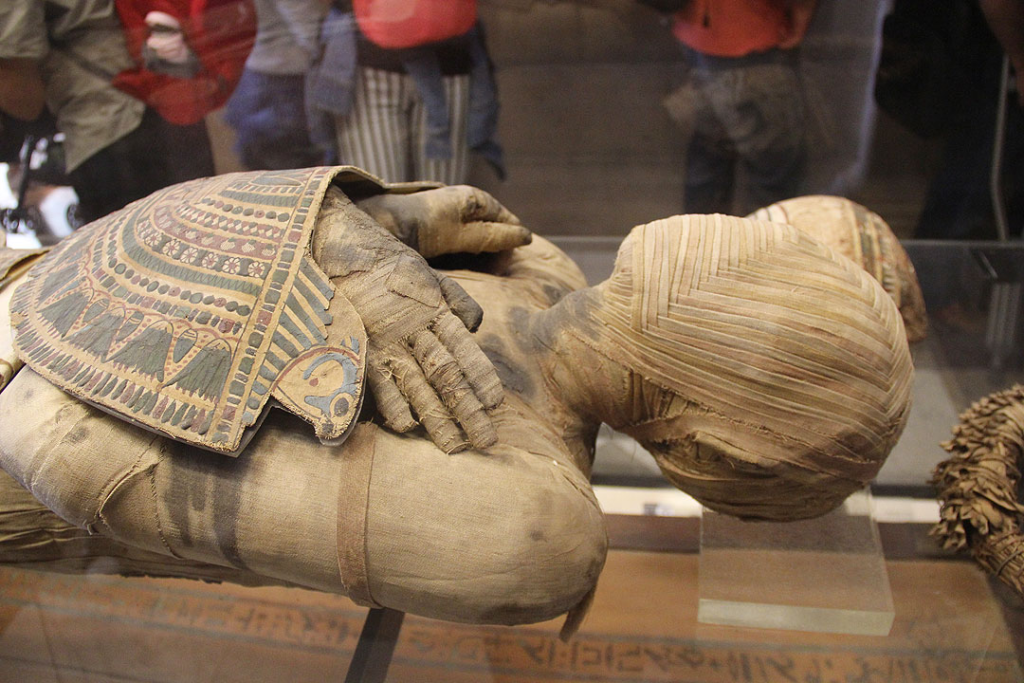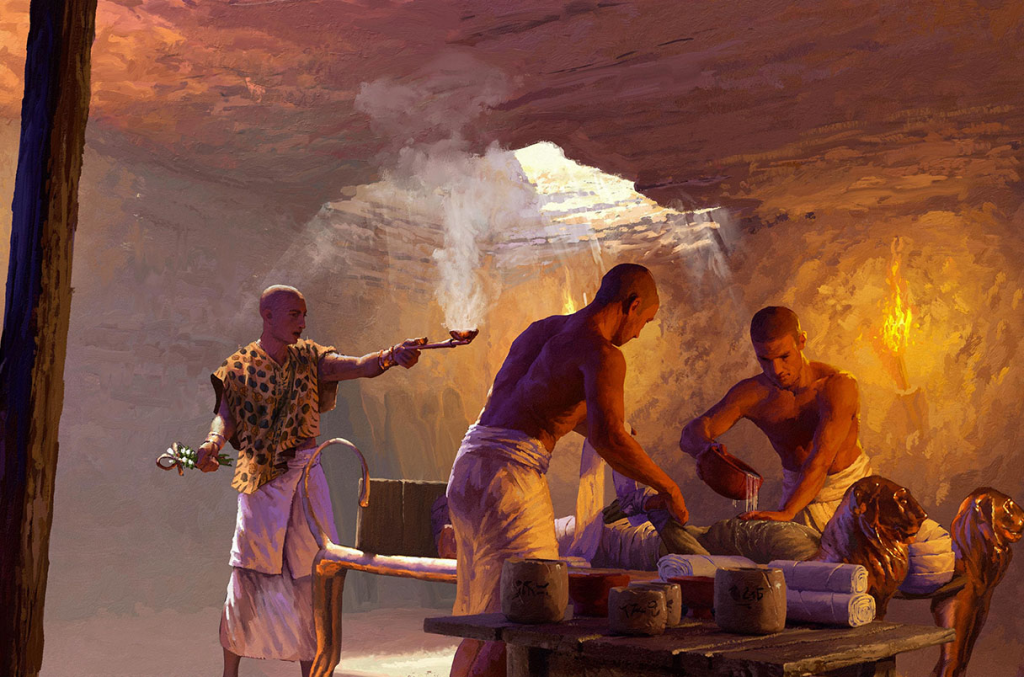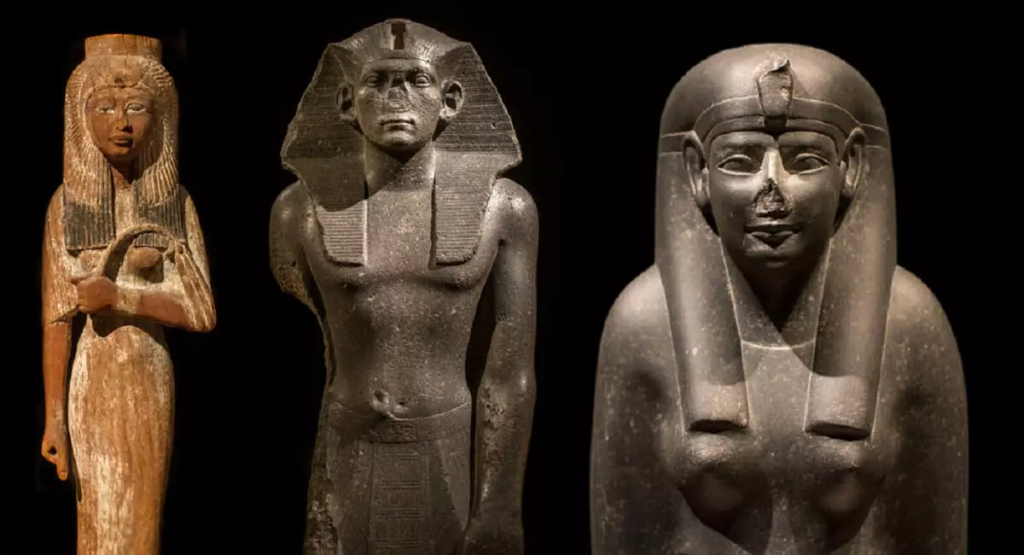
The Ancient Egyptians were keen believers in the concept of the afterlife and the resurrection of both the body and soul. Those set of beliefs originated from their observations across their daily life such as the sun falling across the western horizon each evening and then being reborn once again the next morning in the east. The ancient Egyptian soil would sprout new life from the planted grain. The moon would change its shape each year.
The ancient Egyptians believed in a sense of balance, law & order, and the promise of a new life after death. They utilized many scientific tools and procedures in order to preserve the dead which is called the mummification process which was performed by highly skilled specialists. This honorable tradition was a rite of passage for all the ancient Egyptians to seek to enter the afterlife.
Who Was Mummified?

The Pharaohs of Egypt after death were mummified and buried in a highly elaborate tomb to earn their rightful place in the heavens with the ancient Egyptian deities. All members of royal high officials, royalties, society elites, and nobility received the same service and treatment plus all the common people who can offer them which was considered to be expensive. Many ancient Egyptians for religious reasons choose to mummify animals that were considered to be sacred such as bulls, cats, crocodiles, snakes, birds, and more.
History of Ancient Egyptian Mummies

The practice of mummification was highly widespread starting from the early days of ancient Egypt. The key behind the mummies occurred in the prehistorical times when the air and dry sand with the lack of rainfall preserved many bodies in dug shallow pits. In the 4th and 5th dynasties about 2600 BC, ancient Egypt began to mummify their bodies according to their religious teachings. The art of mummification was completely perfected during the Third Intermediate period (1070 – 712 BC). Across the next 2000 years, the practice of mummification continued and developed all the way to the Roman Period (30 BC – 364 BC). With each period, the mummification quality changed according to the price that was paid.
Highly sophisticated, and preserved mummies date from the 18th and 20th dynasties during the New Kingdom of Egypt (1550 – 1070 BC). In the late period around 450 BC, the great historian Herodotus documented the entire mummification process. The Mummification process faded away in the 4th century when Rome ruled Egypt was a Christian nation that ruled out the mummification process is forbidden. Many scholars and historians believe the mummification process at a lost art but many elements of the process can be found in the way current people honor their loved ones.
Why Mummies Were Made?

The ancient Egyptians believed in life after death and when a person dies, their spiritual essence still lives, and in order for the soul to survive the body has to remain intact. They believed that the spirit is divided into three parts the Ka, Ba, and Akh. The ka was considered the “Double” of the person, which would stay in the tomb, and offerings and objects were presented. The Ba, or “Soul” is free to fly out of the tomb and return at any time. The Akh, or the “Spirit”, would travel through the Underworld with Anubis to attend the Final Judgment with Osiris and entrance to the Afterlife.
The process of preserving the body and turning them into mummies was described in detail in the pyramid texts accompanied by the story of Osiris’s death where the universe fell into utter chaos, and the tears of the gods transformed into materials such as resins, honey, and incense used for the mummification process.
How the Mummies Were Made

Before the mummification process evolved to its finest form, the corpse was put in a pit in the desert in a fatal sleeping position with all their precious personal items. All the water would be absorbed from the body thus preserving it. The body was wrapped in animal skins inside a wooden or pottery coffin and lined with many mud bricks and covered entirely so the preservation procession to be more intact. The internal organs were removed, dried, and put in jars to better improve the mummification process.
The process was performed by skilled priests who extracted the brain from the nostrils with an iron hook then the flank is opened the content of the abdomen is totally removed. The cavity is cleaned and filled with cassia and myrrh plus other aromatic substances. The body is sewn up and covered in natron entirely for 70 whole days, afterwards the body is washed and put in linen bags for 35 days to draw all the moisture across all the tissues. All the removed organs such as lungs, liver, stomach, and intestines, were then put in Canopic jars with dry natron, the heart was left in the body as the core of intelligence.
The body was then filled with lichen, sawdust, cloth scraps, and Nile mud to make the body flexible. The Ancient Egyptians would then replace the eyes with linen pads and small cooking onions. In the middle kingdom, it became a standard to place a mask over the face of the mummy. Prayers from the book of the dead were added to the mummy to make his transition to the afterlife as safe and successful as possible.
Most Famous Egyptian Mummies
Some of the most incredible mummies are found in Egypt located in the mummies hall which holds 20 royal mummies that are made up of two queens and eighteen kings dating from the 17th to the 20th dynasty. The mummies were transported from the Egyptian Museum in Tahrir Square to the National Museum of Egyptian Civilization found in the Fustat through a grand festival called the Pharaoh’s Golden Parade. Some of the most famous and epic mummies are:
Tutankhamun Mummy

The Mummy and tomb of Tutankhamun were discovered in 1922 by Howard Carter in the Valley of the Kings which remains the last preserved tomb in all of Egypt. This discovery is by far the most recognizable which started a new wave of interest in Egyptology. His mummies are found at the Grand Egyptian Museum with his treasures.
Hatshepsut Mummy

Queen Hatshepsut was buried in the Valley of the Kings which was discovered by Howard Carter in 1902 and was confirmed in 2006 by the Egyptian ministry of antiquities and tourism. She was located in a separate tomb containing two coffins. She was most of the most powerful rulers in the history of the New Kingdom who ruled with an iron fist as a pharaoh. Her mummies are found at the National Museum of Egyptian Civilization
Thutmose III Mummy

Thutmose III was known as the Napoleon of Egypt who conquered many lands, won many battles, and expanded the lands of Egypt. He came to the throne of Egypt after Queen Hatshpeut and was buried in the valley of the kings which is now located at the National Museum of Egyptian Civilization.
Seti I Mummy

The great protector Seti I is a legendary ruler who expanded his empire and fortified the entire country and made many great construction projects. His tomb is by far the finest which was found in the Valley of the Kings and his mummy was moved to the National Museum of Egyptian Civilization.
Ramses the Great Mummy

Ozymandias or Ramses II is one of the most renowned Pharaohs in the History of Egypt who won many battles like the battle of Kadesh in 1472 BC and constructed the Abu Simbel temple. He died at the age of 90 after her ruling for 60 years. His mummy and tomb were discovered in 1881 in the Valley of the Kings and it is now located at the National Museum of Egyptian Civilization.
Meritamen Mummy

Queen Meritamen was the daughter and wife of Ramses the Great, she held many religious and royal titles, famous for her limestone statue found at the Ramesseum plus she appeared on the walls of the Abu Simbel temple with her family. Her mummy is found at the National Museum of Egyptian Civilization.
Ahmose-Nefertari Mummy

The grand wife of Ahmose I and mother of Amenhotep I of the 17th dynasty. Her mummy is found at the National Museum of Egyptian Civilization.
Ancient Egyptian Mummies are the embodiment of ancient Egyptian beliefs that showcased some of the incredible facts about the greatest civilization to ever exist and achieve immortality. Discover the Wonders of Ancient Egypt with our Egypt classic tour packages! Explore the mysteries of the pyramids and uncover the secrets of the mummies.

4 Days Cairo and Abu Simbel Tour Package
Embark on an unforgettable 4-day tour package to Cairo and Abu Simbel, where ancient wonders and majestic temples await. Explore the iconic sites of Cairo, including the pyramids of Giza and the Egyptian Museum, before journeying to Abu Simbel to witness the breathtaking temples of Ramses II and Nefertari. With our carefully curated itinerary, knowledgeable guides, and inclusive services, this tour offers a compact yet immersive experience of Egypt’s rich history. Discover the secrets of the pharaohs, marvel at awe-inspiring architecture, and create lasting memories View Tour Details

5 Days Cairo and Alexandria Tour Package
Embark on a 5-day journey through Egypt’s most fascinating cities, Cairo and Alexandria. From the grand pyramids and ancient temples to the coastal beauty and cultural landmarks, this tour package is designed to showcase the best of both worlds. With expert guides, comfortable accommodations, and convenient transportation, you’ll have an immersive and hassle-free experience. Join us on this captivating adventure and create memories that will last a lifetime View Tour Details

6 Days Cairo, Luxor, Aswan & Abu Simbel Package
Embark on an extraordinary 6-day journey through the heart of ancient Egypt with our Cairo, Luxor, Aswan & Abu Simbel package. Begin your adventure in Cairo, where you’ll explore the iconic pyramids and delve into the treasures of the Egyptian Museum. Continue to Luxor and Aswan, where you’ll witness the grand temples along the Nile River, and conclude your tour with a visit to the awe-inspiring temples of Abu Simbel. With expert guides, comfortable accommodations, and hassle-free transportation, this package offers a comprehensive exploration of Egypt’s historic sites. Join us on this incredible journey and unlock the secrets of the pharaohs View Tour Details

7 Days Cairo, Luxor & Alexandria Tour
Experience the best of Egypt’s cultural and coastal attractions with our 7-day Cairo, Luxor & Hurghada holiday. Begin your journey in Cairo, where you’ll discover the iconic Pyramids of Giza, explore the ancient artifacts at the Egyptian Museum, and immerse yourself in the vibrant atmosphere of Egypt’s capital. Then, travel to Luxor, often referred to as the world’s greatest open-air museum, where you’ll explore magnificent temples, tombs, and archaeological sites. Finally, unwind in the idyllic beach destination of Hurghada, known for its pristine beaches and vibrant marine life. With comfortable accommodations, expert guides, and hassle-free transportation, this holiday package provides a well-rounded experience of Egypt’s rich history and natural beauty View Tour Details

